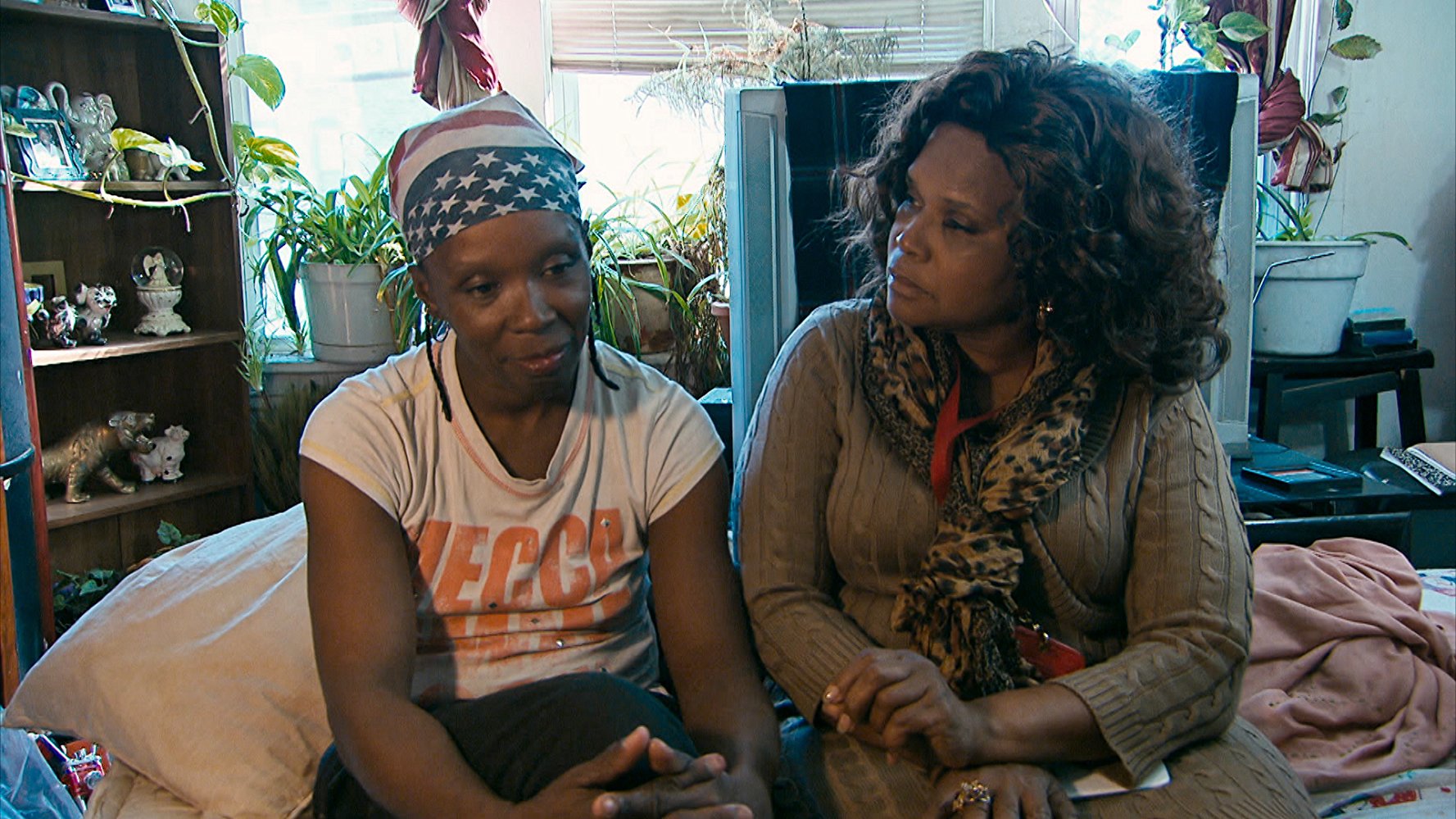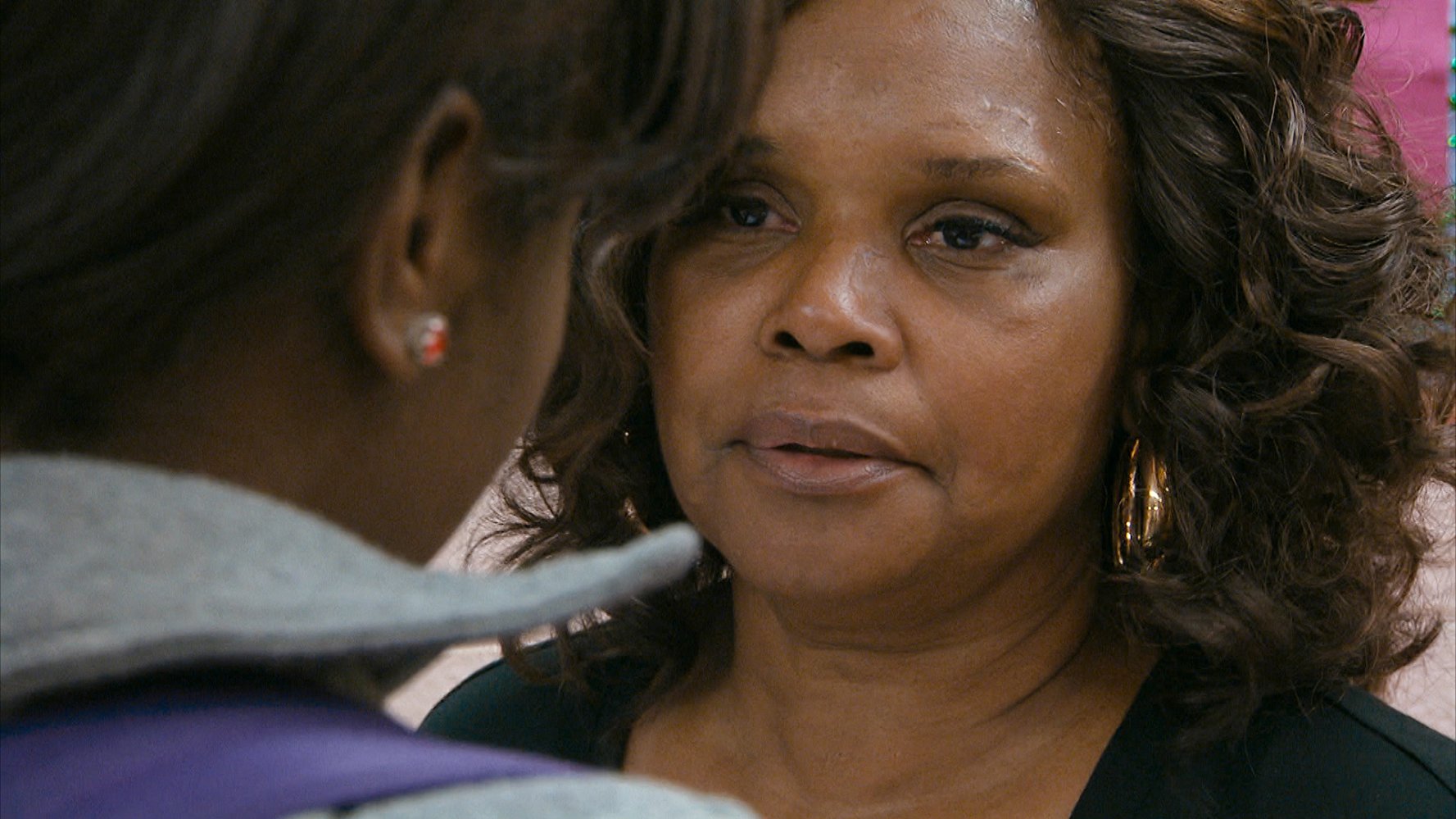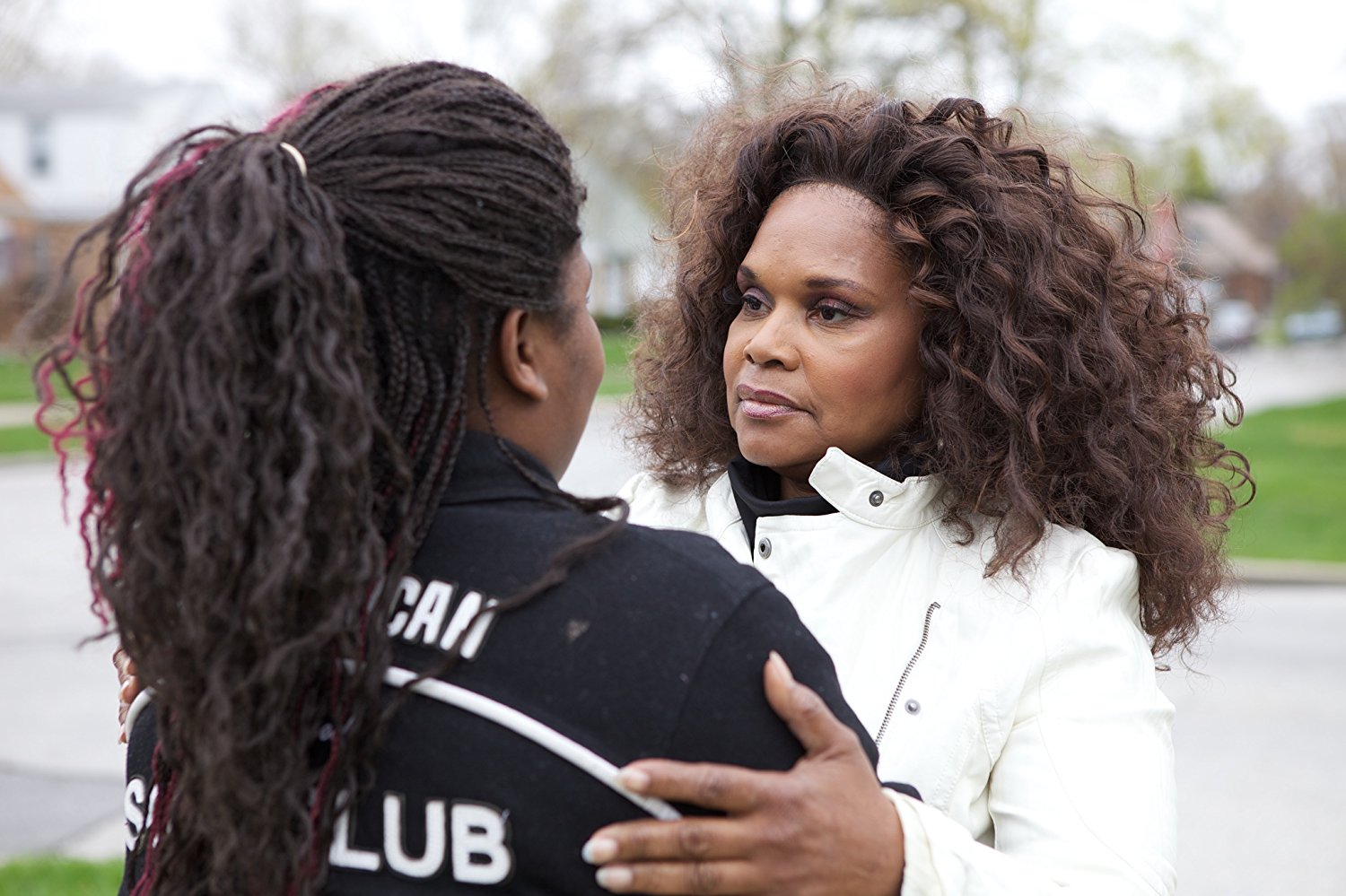In 2015, filmmaker Kim Longinotto released her documentary “Dreamcatcher“ at the Sundance Film Festival. After initially rejecting the idea of taking on this project because she didn’t know if it would tell the story of things happening “now,” Longinotto was ready to show the world the story of the women who worked Chicago’s streets.
In Salt Lake City, Utah, “Dreamcatcher” debuted for the first time. Audiences watched as the strong and domineering Brenda Myers-Powell, a former prostitute who now works to help get women off the streets, took on the problems of a city over 1000 miles away from them. The documentary opens with shots of Chicago while police sirens fade in between a dark orchestra music, followed by Myers-Powell driving around the streets of Chicago looking for prostitutes to hand out condoms to and spread the word of her organization — the Dreamcatcher Foundation. The rest of the documentary follows Myers-Powell through her normal days of balancing being a mother to a boy that is not hers, helping teenagers in an after-school program and trying to get girls off the streets. “Dreamcatcher” takes an up-close-and-personal look at the lives of women in Chicago who sell their bodies for money and the people who are trying to help them get out of it. The movie isn’t simply telling the story of a former sex worker. Instead, it shows the support that is available for women in the male-dominated sex industry and allows for the stories of the people behind prostitution to be told in their way, and it succeeds in every way imaginable.
Prostitution has been a part of cultures around the world and throughout many centuries. The Red Light District in Amsterdam attracts people internationally who come to “window shop,” or simply just to look around at the infamous area. In places like New Zealand and Austria, prostitution is a reputable career path to take, and sex workers have health benefits, pay taxes and are required to undergo annual health exams.
However, it has been illegal in the U.S. for years. In Chicago, any person who knowingly performs, offers or agrees to selling sex for money can spend up to a year in jail, pay up to $2,000 in fines and even have their car impounded if it was used to get to the site where they were arrested. Street solicitation carries a lighter sentence and smaller fines, but the possibility of being arrested by a supposed client is a daily fear for those who work on the streets. Regardless, the illegal sex industry has continued on, whether there are people who stand out on the streets, take shelter in brothels or go through online chatrooms to find clients.
It is not a secret that prostitution still exists throughout the United States, but the way in which people choose to regard the women who work — or are sometimes forced to work — as a prostitute shows society’s outlook on the subject. They are often looked down upon and seen as lesser than people, but in a society that is so accepting of sugar daddies and sites like Seeking Arrangement, the way that prostitution is viewed can be surprising.
The prostitution scene in Chicago is less than glamorous, though. The West Side is put on full display in the documentary, where women go to the most dangerous part of the city looking for work and knowing they might not make it home in the morning. Finding Justice, an organization aimed at reporting on special topics like sex work and prostitution that for a prostitute in America, the murder rate is 204 for every 100,000 — a staggering number.
Though it is hard to get any accurate statistics when it comes to sex worker because it is illegal, it has become known throughout the sex work community that the women in the business are beaten, stabbed, shot and sometimes even kept as slaves when they enter into prostitution. Most of them are addicted to drugs and are taken advantage of by pimps, who keep them under their control. The legalization has been a hotly debated topic in and outside the government for years, and many wonder what the right thing is to do to solve the constant issue of sex work. For Myers-Powell in “Dreamcatcher,” the only priority is making sure the women are taken care of and treated like human beings.

Screenshot from “Dreamcatchers” on Netflix.
Myers-Powell tells a condensed version of her story early on in the documentary. She says that her grandma told the then 14-year-old that she needed to start bringing home money for the household, and living in the South Side of Chicago, she only knew how was to stand on the street and sell herself. In the documentary, she told a group that had gathered to listen to her that she cried the first few times that she sold sex, but her need to bring money outweighed the disgust she felt for what she was doing. She continued being a sex worker for 25 years.
However, Myers-Powell made it out. One time, a client drove off with her dress stuck in the door of his car, pulling Myers-Powell along with him, her face dragging on the pavement for six blocks. By the time she finally got loose, her face had been torn to shreds. She promised she would get out, make a new life for herself and help the women around her.
The rest of the documentary follows Myers-Powell through events that most people would find exhausting and terrifying. Myers-Powell spends her nights handing out condoms and coats to the “hos” as she would call them on the street and talking to them about their experiences. She tells them the name of her foundation and reassures them that when they are ready, she will be there to help them turn their life around. Her days usually revolve around answering calls from the clinics, women or at-risk students she works with. Myers-Powell never really knows when she will get a call that someone is ready to leave sex work, or that they went back to their pimp and the drugs. Her job is 24 hours a day, seven days a week. When someone needs her, she is there. Her entire life has been built to keep the women in Chicago off the streets and making a better life for themselves.
Filmmaker Kim Longinotto follows Myers-Powell through her life, showing audiences the life of a former prostitute who dedicated her life to serving others. Longinotto accepts Myers-Powell for what she is – scars, breakdowns and sassy quips — and tells her story without the judgement that usually comes when people talk about sex work. The entire film focuses on the real-life stories of the sex workers in Chicago and showing their stories in a way that does not shame them, but instead shows the side of the fight that is trying to give them a better life.
At one point in the documentary, a young girl, barely 15, asks Dreamcatchers for help getting out of the sex work that she’s been involved with for three years. Myers-Powell looks back at the students at the local high school that she talks to in an effort to keep them away from sex work. They tell her about their struggles to bring home a paycheck, and sometimes about the family friend who sexually assaulted them. women in prison about their time on the street and their desire to get on the straight and narrow once they are released. The girl who wants out of the industry is the same age as the girls in the classroom, but her story went in a different direction.

Screenshot from “Dreamcatchers” on Netflix.
Myers-Powell is dedicated to helping every woman she can, no matter their age or situation. Each week, she goes up to the prison and talks to incarcerated women about their time on the streets in an effort to keep them clean upon release. In the prison classroom, they open up about the abuse they received at the hands of their parents and their pimps, and their stories scarily mirror those that come from the girls in high school who detail their molestations.
Each story that is told throughout “Dreamcatcher” is expertly woven into the film to dispel stereotypes and show the complexities of the lives of those on the street. Some are forced at the hands of the people who are supposed to keep them safe, some have to resort to working on the street just to be able to put food on the table and keep the lights on. At the center of the issue is the fact that these are people who are being abused and kept captive – “Dreamcatcher” is meant to tell their stories in a way that is honest, blunt and makes people see the problem at face value..
In the matter of telling truths, “Dreamcatcher” addresses another common misconception that assumes the women in sex work are the winners when it comes to prostitution and that they are not reliant on their pimps for money, drugs and the basic needs to live. The film also managed to eliminate the idea that the women on Chicago’s streets are living their lives in a way that cheats the patriarchy and puts women on top. In an interview with Women in the World, Myers-Powell said, “I wanted (people) to know that (prostitution) came from a lot of pain… And the girls who are out there are not just happy hookers. They’re not enjoying the sex. It’s not a lot of fun.”
Pain is a central topic in “Dreamcatcher.” Whether it’s the scene where Myers-Powell breaks down and tells the crew, “I have my days. They’re few and far between, but I have my days,” to the former prostitute who is desperate to make something of herself after she becomes pregnant for the second time, Longinotto addresses the pain and the hurt that the women carry on their shoulders each day. As New York Times’ Brigit Katz notices, “very rarely does a film present the voices of poor, black, and otherwise disenfranchised people with such unobtrusive patience.”. The raw display of emotions that each participant wears so visibly on their shoulders is expertly shown through “Dreamcatcher” in a way to better allow for audiences to understand the women who live dangerously on the streets of Chicago, but it does so in a way that doesn’t push a narrative onto their lives. Instead, “Dreamcatcher” allows for the women to tell their stories as they are meant to be told – unaltered, not fitting any sort of agenda and honest to the experiences.
The documentary also describes the efforts to move on. Myers-Powell told Women in the World that what she wanted out of the documentary was to “show people that girls can come out of it and they can change. So many times throughout the documentary, you hear the women and the people around them doubt whether or not they will be able to truly break free from the streets and make something of themselves. “Dreamcatcher” challenges the idea that “once a ho, always a ho,” and it starts with Myers-Powell sharing her story, and continues throughout the film as the girls and women fight to claim their lives back from the drugs and the pimps.
Social justice is a fight, and fighting for women to get out of sex work and become independent is a war that “Dreamcatcher” chose to take on. The Dreamcatcher Foundation exists because not too many other people were willing to take on the challenge of going into rough neighborhoods and onto the terrifyingly dark streets and talking to the women, offering them help, advice, and condoms. Since the women who work at the Dreamcatcher Foundation used to be on the streets, they know better than anyone that those women have lives worth saving. “Dreamcatcher” was created to make sure that their hard work didn’t go without notice.
Overall, the Dreamcatcher Foundation has reached out to an estimated 2500 girls, and have rescued almost 100 girls since their doors have been open. Myers-Powell is now trying to get her next project, the Dream Center, off the ground. The Dream Center is aimed to become a “comprehensive care facility to help women transition out of prostitution.” However, the project has a hefty $500,000 price tag to complete construction and allow for fully-trained therapists and crisis social workers to help serve the community, so until then Myers-Powell and the co-founder of Dreamcatchers will continue working their full-time day jobs while running the business.
There are a fair number of struggles for each person throughout the film, and there are times when it may seem like they have no other option but to go back to the streets and drugs. However, Myers-Powell, the spearhead of solving the prostitution problem in Chicago, is the prime example and face of what it means to move on and find a new reason for life. She is who every other woman in the film looks up to, because if she can do it then so can they. Without Myers-Powell getting in their face when they want to fall off the horse, without her booming voice reminding them they are worth more, there would have been women who decided to turn back to their lives of prostitution. Without Dreamcatchers, there would be no one left to support their dreams.
Dreamcatchers is available to view on Netflix.
Header image a screenshot from Netflix.




NO COMMENT